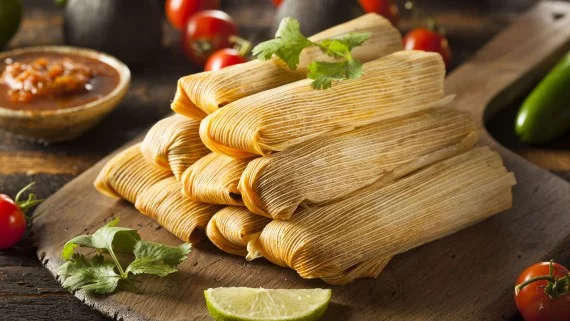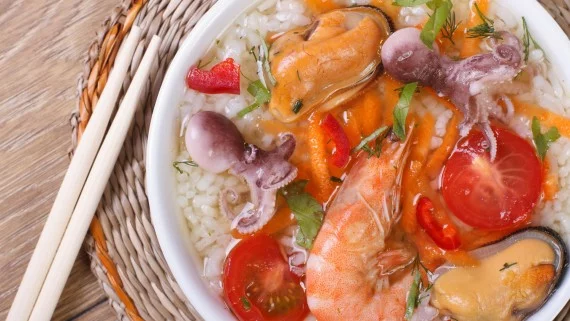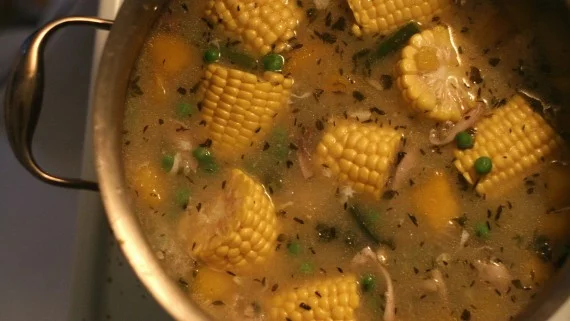The typical dishes of the Peruvian Amazon region are classified among the best recipes in the world due to their great variety of ingredients, flavors and textures, which are the result of the influence of all the cultures that have been arriving in the country.
Below you have an index with all the points that we are going to deal with in this article.
Article Index
- 1.
- 2.
- 3.
- 4.
- 5.
- 6.
- 7.
- 8.
- 9.
- 10.
- 11.
- 12.
- 13.
- 14.
- 15.
- 16.
- 17.
purtumute
It consists of a stew whose base ingredient is beans, both white and black, which are seasoned with mote and coriander. Some recipes also add corn or even pine nuts, although these ingredients are optional.
Rolled up
The minced meat roll is another of the star dishes of the Peruvian Amazon and is similar to the empanadillas popular among the spanish tapas.
For its preparation, you need minced meat (usually beef, although it can also be made with chicken meat), onion, eggs, breadcrumbs and spices to taste.
Tacacho with jerky
This dish is not only popular in the Peruvian Amazon, but in all the gastronomy of Peru, although the original recipe comes from the Amazon rainforest.
The word sloppy comes from the Quechua language and is originally written taka chu, whose literal meaning is I hit him.
The tacacho consists of a mass obtained from mashing banana when it is still green and this is mixed with pork rinds, dissolved butter and spices to taste.
For its part, cecina is dried and smoked pork meat grilled and marinated with typical spices of the Peruvian jungle.
humitas
Humitas are also known as huminta (in singular humi, a term adapted from Quechua and originally written jumint'a).
It is about corn cob leaves, locally called a child o panca, stuffed with a pasta made with corn and seasoned with spices from the Peruvian jungle.
Yucca juanes
Cassava is also known as chips, tapioca o guacamote, this last term used more in the Mexican Kitchen.
Its skin is rough and hard, so it is not edible. For this reason, the yuccas are peeled and then cooked, so that the pulp becomes soft.
Depending on the variety, it can be whitish or yellowish in color. Cassava, when ready, is mixed with boiled rice, chicken meat, boiled eggs, olives and various spices. All this is wrapped in a bijao leaf, closed and boiled for about 90 min.
Chicken Inchicapi
This kind of soup or stew is also very popular in Amazonian gastronomy. It is cooked with hen cut into prey, peeled peanuts (called peanut in the area), corn flour, garlic, sacha culantro (a variety of herbaceous plant common in the Amazon jungle), yucca and chopped onion. Its flavor can be classified as intense and the texture is thick.
Fish casserole
This dish consists of a stew or stew made from a variety of fish and mollusks, such as: hake or sea bass, squid, mussels, grouper, prawns, octopus ... All of them are mixed with boiled rice and vegetables (pepper, carrot, tomato, etc. .).
Lamb casserole
Like the fish casserole, this stew is prepared in a similar way, except that instead of fish, it has lamb meat.
In addition, it includes sweet potato (also known as potato, Sweet potato, chaco o Sweet potato), roasted potatoes, corn, squash, green chili and assorted vegetables.
Cuy roasted with potatoes
The guinea pig is a rodent typical of the Andean region of South America that can be found in Peru, Bolivia, Ecuador and Colombia. Guinea pig meat is rich in omega 3, low in fat and contains high levels of protein.
For this particular dish, the guinea pig is seasoned with salt, pepper, pisco and garlic the night before the day it is to be eaten.
Afterwards, it is deep-fried until the skin is golden brown and the texture is crisp. It is usually served with potatoes, white rice, tomatoes, onion, lettuce leaves ...
Fried trout
The region of the Peruvian jungle where the most trout are raised is Huancayo. To fry the trout, they must be dipped in milk, coated in flour and, finally, fried in plenty of oil.
The result is that the trout is golden and crispy. They usually add a couple of lemon slices and a few fresh parsley leaves, chopped and scattered on top.
This dish is widely consumed in Ayacucho, Cusco and Puno. It stands out for being very rich in proteins, minerals and vitamins, as well as potassium, iron, phosphorus and other essential nutrients.
Cornstarch alfajores
This sweet is actually popular throughout Latin America. They are small round-shaped cakes made of margarine, sugar, flour, cornstarch and egg yolks, from which the dough that will make up the alfajores is obtained.
For the filling, dulce de leche is usually used, but the filling of your choice can be used: pastry cream, chocolate, vanilla cream ... Some versions of this dessert include grated coconut.
cocadas
Cocadas are typical balls of Peru, as well as the rest of Latin America and Spain, where they are known as Coquitos. They are prepared with fried coconut grated and mixed with cinnamon and dissolved sugar. All this is mixed giving it a ball shape.
Breadguards
This dessert is typical of November 2 or Day of the Faithful in the Andean regions of Peru, Bolivia, Argentina, Ecuador, etc. and are also known by the name of bread dolls, bread wawas or even tantowawas.
It is a loaf of wheat bread that is molded in the shape of a child or baby and decorated with colored sugar and sometimes filled with pastry cream or some other sweet ingredient. The term wow means in Quechua little boy.
Purple laundry
It is, in fact, a drink that is taken to accompany the bread guagas. It is prepared with corn flour, babaco (a fruit that grows in the Andean region), pineapple, blackberry, naranjilla and strawberry (known as Strawberry in Peru). It is common to dip the guagas in this drink.
Roasted milk
It consists of a homemade dessert with a texture similar to that of flan. It is also a very popular dessert in Chile. The base is prepared with condensed milk, cold milk, eggs and vanilla essence. Once the base is prepared, liquid caramel is added.
Purple porridge
This dessert is made with purple corn, which is why it has a deep purple appearance. This fruit is grown in the Andes of Peru, as well as Argentina, Ecuador and Bolivia.
It is also used in Mexico. Actually, it is a dessert that is eaten in the month of October to commemorate the Lord of Miracles.
Drinks or drinks from the jungle
As in their meals, in the Peruvian jungle there is a great variety of exotic drinks, which are referred to in the area as jungle drinks, which are popularly recognized for their curious names and for their aphrodisiac powers.
Among the main ones we have the guarapo or huarapo, a drink based on the juice of the sugar cane after being boiled and fermented.
This is followed by the breaker calzón or RC, which is prepared with brandy and roots of jungle plants; In some areas, it is also known as break bed. Other similar liquors are: daddy burns, he just screams and the devil's breath.
He too milk liquor, which is prepared with whey and brandy, is very popular and, in addition, the production process is simpler than that of other jungle liquors.
It requires a short maceration period and the preparation does not involve too many steps to follow, since too many ingredients are not necessary (brandy, vanilla extract, lemon, sugar, milk, glycerin and ethyl alcohol).
Finally, the underwhelmed, which owes its deep purple color to the fact that it is prepared with black grapes that grow in the Peruvian jungle.
In many cases, the grapes are left whole floating in the liquor and can be accompanied by a slice of lime to give it a certain acid touch.
Another drink in which brandy cannot be absent as a basic ingredient is chuchuhuasi, which is made from the root of the plant of the same name that grows in the Condorcanqui area.
The liquor pure pure It owes its striking name to it is made with seeds of the fruit of the pur pur, as well as syrup and brandy.
This article has been shared 643 times. We have spent many hours collecting this information. If you liked it, share it, please:





















